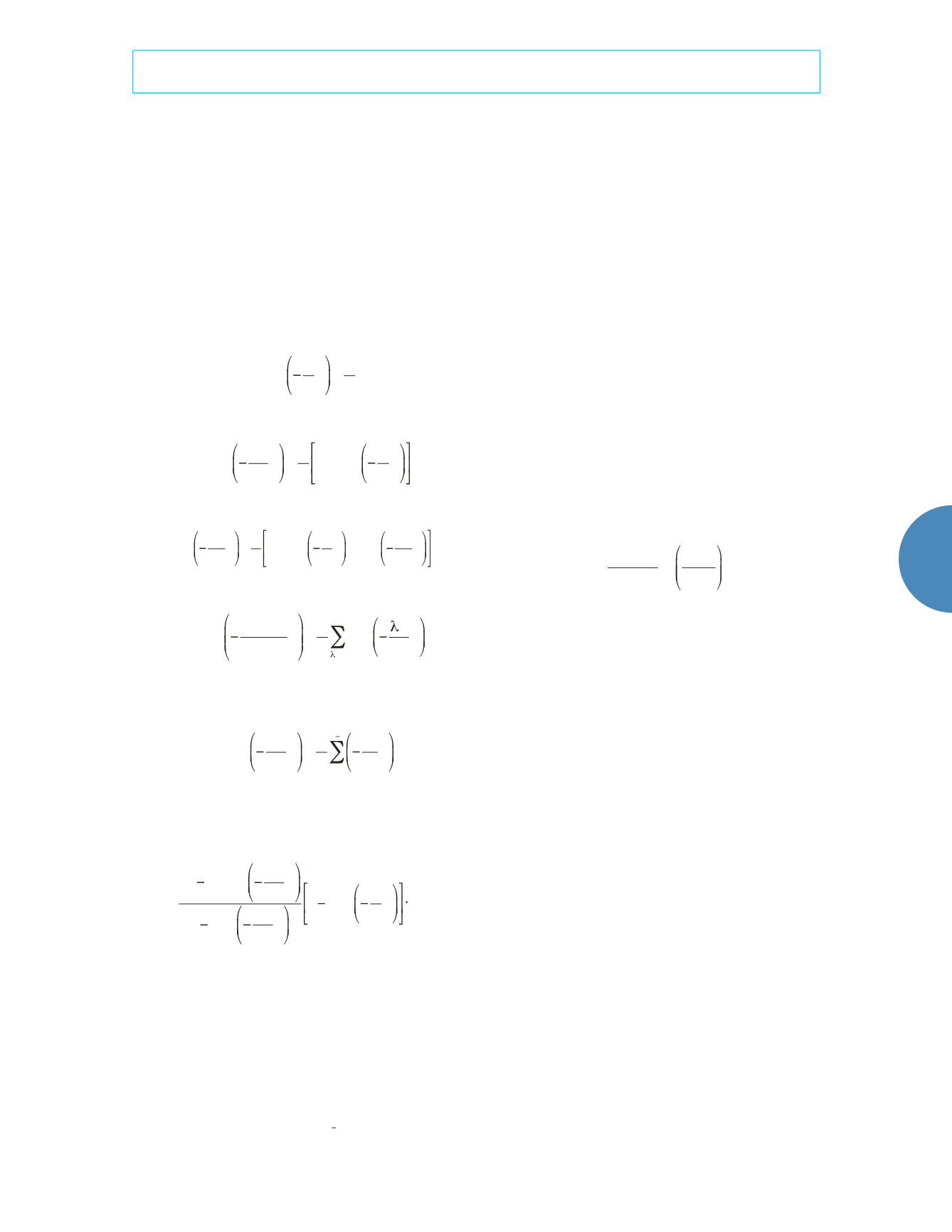
121
Tecnología y Ciencias del Agua
, vol. VIII, núm. 2, marzo-abril de 2017, pp. 117-126
Wang
et al
.,
Simulation for non-point source pollution based on QUAL2E in the Jinghe River, Shaanxi Province, China
ISSN 2007-2422
•
Where
S
1
, S
2
,… S
i
,… S
m
are sections in the
basin;
c
0
is the concentration of section
S
i
;
c
n
is the
concentration of section
S
i
+
l
; the basin is divided
into
n
parts uniformly spaced between
S
i
and
S
i
+l
;
c
1
, c
2
,… c
j
,…, c
n
are the concentrations of all
the sections. The precision is higher for higher
values of
n
. The concentration of the
j
th
section
is taken as the initial concentration of the
j
+
1
st
section. When calculated with equation (5), then:
c
1
=
c
0
exp
k
u x
+
S
k
(6)
c
2
=
c
0
exp 2
k
u x
+
S
k
1
+
exp
k
u x
(7)
c
3
=
c
0
exp 3
k
u x
+
S
k
1
+
exp
k
u x
+
exp 2
k
u x
(8)
c
j
+
1
=
c
0
exp
j
+
1
( )
k
u x
+
S
k
exp
=
0
j
k
u x
(9)
Similarly,
c
n
=
c
0
exp
nk
u x
+
S
k
jk
u x
j
=
0
n
1
(10)
Then
S
=
c
n
c
0
exp
nk
u x
1 exp
nk
u x
1 exp
k
u x k
(11)
where the water quality and hydrological values
of the conventional sections can be acquired by
monitoring, and only the degradation coeffi-
cient (
k
) is unknown. Usually, the degradation
coefficient is temperature- dependent, and is
calculated using equation (12):
k
=
k
20ºC
(
)
1.008
T
20
(
)
(12)
where
k
(20 °C)
is the degradation coefficient of the
water quality parameter at a temperature of 20
°C (1/d), and
T
is the water temperature (°C).
The degradation coefficient of different water
quality parameters is determined by different
methods. For the water quality parameter BOD
5
,
the methods include the laboratory method,
slope method, two-point method, multi-point
method, and others. Nitrogen is involved a
very complex circulation process in the water
environment, comprising nitrifying and denitri-
fying processes. Since, in general the inorganic
nitrogen concentrations in rivers are quite low,
the basic reactions are reduced to nitrification
and denitrification. In this study, we used the
two-point method to calculate the degradation
coefficient between
S
i
and
S
i
+1
at 20 °C using the
following equation:
k
=
86400
u
l
ln
c
up
c
down
(13)
where
k
is the degradation coefficient (1/d);
u
is the average current velocity between sec-
tions (m/s);
l
is the distance between sections
(m);
c
up
is the upstream concentration of the
water quality parameter (mg/l), and
c
down
is the
concentration of the water quality parameter
downstream (mg/l).
Equation (11) is applied to calculate the
source-sink term of the water quality parameter
in wet and dry seasons of a hydrological year,
respectively; the difference between the source-
sink term in wet season and that in dry season is
the diffuse source pollution for the water quality
parameters between
S
i
and
S
i
+1
in the current
hydrological year. The diffuse source pollution
from all the adjacent sections in the basin during
the hydrological year is calculated, and the total
sum being the diffuse pollution load of the basin
for the hydrological year.
There are two monitoring sections on the
Jinghe River in Shaanxi province, namely the
Jingcun and Zhangjiashan sections, with no
point source discharges in-between, except for
such tributaries as the Taiyu River and Sanshui
River. The area between these two sections is the


